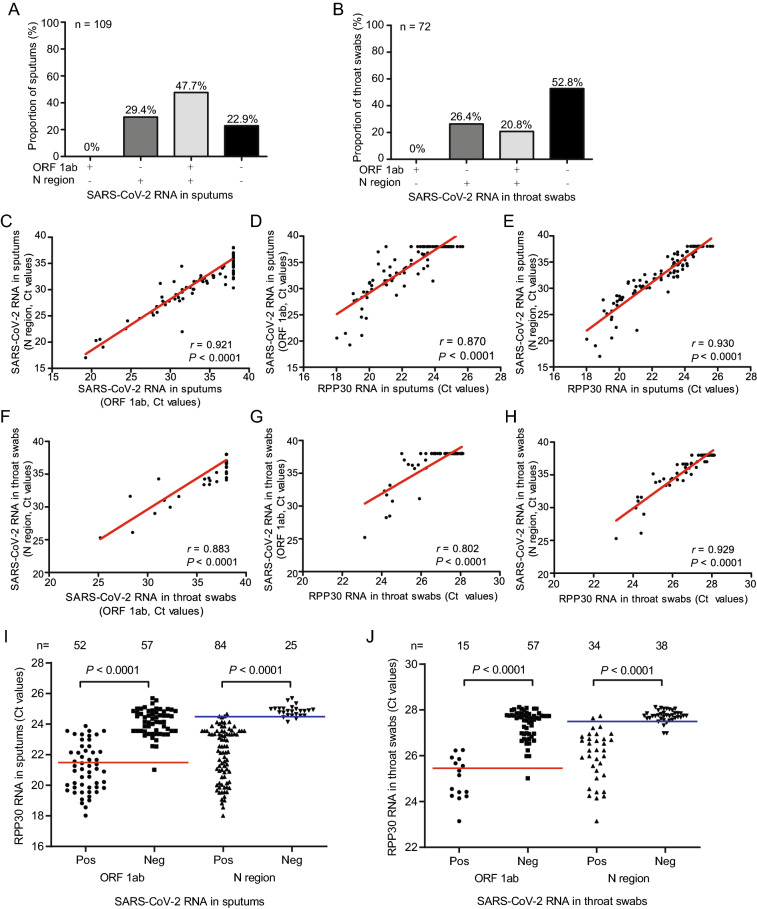Correction to: Virologica Sinica (2020) 10.1007/s12250-020-00273-8
In the original version of Fig. 4I and 4J, the cutoff lines were accidently shifted during figure layout. Figures 4I and 4J are re-drawn and provided below.
Fig. 4.
The RT-PCR detection of SARS-CoV-2 RNAs in 181 sputum and throat swab specimens from 20 patients with conflicting RT-PCR results. 109 paired sputum (A) and 72 throat swab (B) specimens were collected and subjected to SARS-CoV-2 specific RT-PCR assays targeting the ORF1ab and N regions. +: RT-PCR positive; −: RT-PCR negative. Pearson correlation coefficients for the levels of detected SARS-CoV-2 RNA (based on the assays for ORF1ab and N region) and RPP30 RNAs in patient samples were calculated. For sputum specimens: C ORF1ab and N region; D ORF1ab and RPP30; E N region and RPP30. For throat swab specimens: F ORF1ab and N region; G ORF1ab and RPP30; H N region and RPP30. The Ct values of RPP30 RT-PCR were used to analyze the positive and negative results of ORF1ab and N-specific RT-PCR assays with 109 sputum (I) and 72 throat swab (J) specimens. Pos: positive results; Neg: negative results. The negative RT-PCR results of SARS-CoV-2 detection correspond to high Ct values for RT-PCR for RPP30 RNAs. Red lines: cutoffs for ORF1ab RT-PCR; blue lines: cutoffs for N specific RT-PCR. The results were tested for significance by using the Mann–Whitney test (I, J). A P value of < 0.05 is considered as significant.
Contributor Information
Mengji Lu, Email: mengji.lu@uni-due.de.
Zhenhua Zhang, Email: zzh1974cn@163.com.



